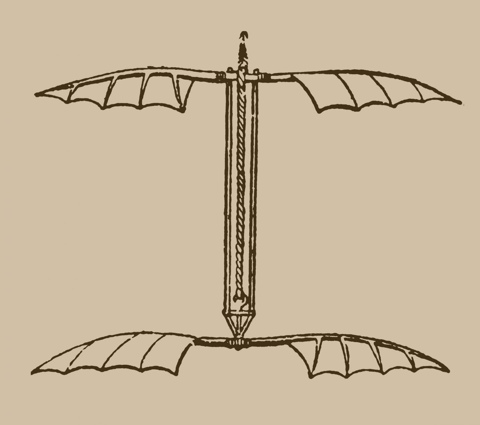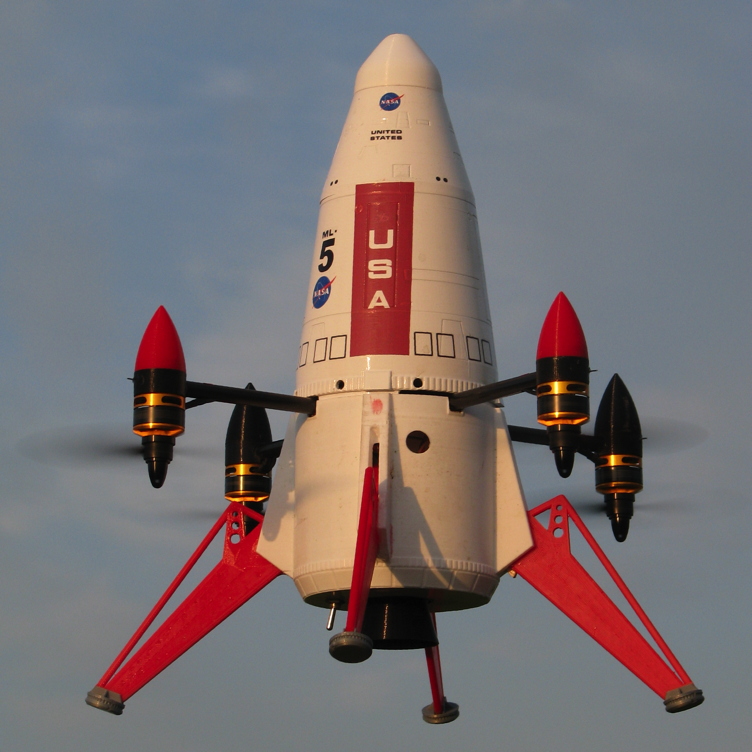FWIW - Alphonse Penuad designed a "toy" rubber band powered model helicopter around 1870, which was little more than a lightweight wood structure with two props (one at each end), powered by a twisted rubber band.
Even the Wright Brothers had a version of this when they were kids.
In the late 1960's, I had a North Pacific brand "simple" version of the same design, using the classic red plastic propellers (one was modified) from their Sleek Streak, as well as the same kind of balsa fuselage stick as used for the Sleek Streek. Didn't climb too straight. When the rubber band ran out of power, it sort of flutter-tumbled to the ground. I THOUGHT that I bought that from North Pacific. but I can't find any trace of it on the internet, and I ran across an impressive 1966 advertisement of everything they offered. At one time I had a few Sleek Streeks, so now I wonder if maybe in my experimenting with them if I might have cobbled that double-propped copter together on my own, gluing a prop to the fuselage.
In the last 3-5 years, I do recall seeing some electric motor/prop powered "rockets", but IIRC they just had 1 motor and prop on the nose, and the fins helped prevent too much of a torque roll (as well as stability). Think they used super-capacitors of something like that, which only ran a few seconds, and going up 100-200 feet. But, IIRC the "descent" was not so good. Also, while some were homemade, I think at least one was sold commercially.
Ah, OK, found one, Hackaday.
https://hackaday.com/2019/05/07/supercapacitors-propel-rocket-to-the-skies/
Now, for me, if the rocket has propellers, I prefer 4-propeller powered rockets (that once in awhile uses a rocket motor too). Lands softer too. USUALLY.




![0702200845[1].jpg 0702200845[1].jpg](https://cdn.imagearchive.com/rocketryforum/data/attachments/339/339757-4c11d13034342e1c21882f12526607b5.jpg)

